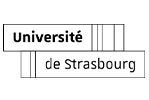Geomorphology and geochemistry to assess human impacts on the Upper Rhine over the last centuries
As hydrosystems are particularly sensitive to human activities, it is crucial to assess the evolution of human impacts as well as the effects of some restoration actions implemented during the last decades. This study focuses on the section of the Upper Rhine between Neuf-Brisach and Strasbourg. It aims at mapping the evolution of the geochemical signal recorded in the fine sediments deposited in response to several river-engineering works. As fluvial deposits vary both spatially and temporally, the selection of coring sites is based on an unprecedented hydromorphological reconstruction, combining a planform study using former maps with data related to the vertical dynamics of the hydrosystem. Each core is dated thanks to a set of cartographic and hydrological information, combined with luminescence, 137Cs and radiocarbon. The geochemical, mineralogical and grain-size characterization of these dated archives provides an accurate picture of the spatial evolution of the composition and quality of the Rhine sediments over the last 200 years. Results are discussed according to the evolution of human activities in the catchment. They also allow discussing the hypothesis that paleo-channels cut by the regulation works and filled by fine sediments are major pollution hotspots in the hydrosystem.




